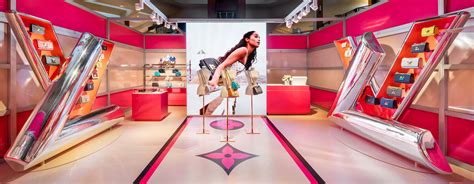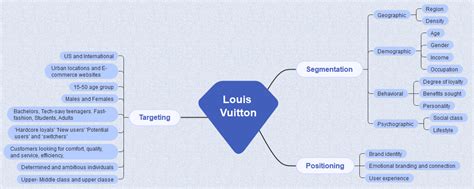case study louis vuitton | louis vuitton target customer case study louis vuitton As one of the most recognizable names in the luxury world, Louis Vuitton’s headway and approach to advertising, marketing, and digital transformation is one luxury brands can and should learn from. Single malt Scotch refers to single malt whisky made in Scotland. [1] [2] To qualify for this category, a whisky must have been distilled at a single distillery using a pot still distillation process [3] [4] and made from a .
0 · louis vuitton virtual try on
1 · louis vuitton target market demographics
2 · louis vuitton target customer
3 · louis vuitton social media presence
4 · louis vuitton pricing strategy
5 · louis vuitton case study pdf
6 · louis vuitton brand positioning
7 · louis vuitton brand identity
280. 19K views 2 years ago. This is a video which educates people to recognize the differences between an Authentic Coach Rogue 25 bag to a Fake one imitating the same stile. The information.
Louis Vuitton, a renowned luxury fashion brand established in 1854, has successfully combined tradition and innovation in its marketing strategy to maintain its . As one of the most recognizable names in the luxury world, Louis Vuitton’s headway and approach to advertising, marketing, and digital transformation is one luxury brands can and should learn from.
2009 rolex submariner two tone
A case study based on analysing Louis Vuitton will investigate and examine all aspects of international fashion brand marketing, sustainable branding and look at its significant modern growth from both a European and global perspective. This case study deals with the opportunities and challenges of Louis Vuitton, the leading European luxury sector multinational firm, in Japan, taking into account the unique . Louis Vuitton is a brand that has exists for a very long time and it is the perfect example to visualize how a brand can develop itself according to the needs of modern consumers. The.
As the world moves towards a post-pandemic reality, Louis Vuitton has continued to use Waitwhile to manage lines, limit the number of customers in their stores, and communicate with guests before, during, and after their visit using SMS .
why rolex dont show prices
Louis Vuitton is the only brand in the world that has no TV commercial, no second product line, no promotion on sales, no free item to give away. Louis Vuitton also has no set of products for sales, no outlet, no license for any other third party.This case deals with the opportunities and challenges of Louis Vuitton, the leading European luxury-sector multinational firm, in Japan, taking into account the unique features of brand .1837 – 16-year-old Louis packed his bags and left for the nobility of Paris. 1852 – Napoleon III ascended to the throne, and Louis Vuitton was selected as the Queen’s box-maker and . Louis Vuitton, a renowned luxury fashion brand established in 1854, has successfully combined tradition and innovation in its marketing strategy to maintain its preeminence in the industry. This case study delves into the brand’s ability to retain exclusivity while adapting to the digital landscape.
image rolex submariner
As one of the most recognizable names in the luxury world, Louis Vuitton’s headway and approach to advertising, marketing, and digital transformation is one luxury brands can and should learn from.
A case study based on analysing Louis Vuitton will investigate and examine all aspects of international fashion brand marketing, sustainable branding and look at its significant modern growth from both a European and global perspective. Changing consumer preferences and attitudes towards luxury goods. By understanding the strengths, weaknesses, opportunities, and threats facing Louis Vuitton, the company can make informed decisions about how to continue growing and maintaining its position as a leader in the luxury goods industry. This case study deals with the opportunities and challenges of Louis Vuitton, the leading European luxury sector multinational firm, in Japan, taking into account the unique features of brand management, and integrating culture and consumer behaviour in Japan. Louis Vuitton is a brand that has exists for a very long time and it is the perfect example to visualize how a brand can develop itself according to the needs of modern consumers. The.
As the world moves towards a post-pandemic reality, Louis Vuitton has continued to use Waitwhile to manage lines, limit the number of customers in their stores, and communicate with guests before, during, and after their visit using SMS on mobile devices.
Louis Vuitton is the only brand in the world that has no TV commercial, no second product line, no promotion on sales, no free item to give away. Louis Vuitton also has no set of products for sales, no outlet, no license for any other third party.

This case deals with the opportunities and challenges of Louis Vuitton, the leading European luxury-sector multinational firm, in Japan, taking into account the unique features of brand management and integrating culture and consumer behaviour in Japan.1837 – 16-year-old Louis packed his bags and left for the nobility of Paris. 1852 – Napoleon III ascended to the throne, and Louis Vuitton was selected as the Queen’s box-maker and packer. 1853 – Louis has won the trust of the black-lashed Nepalese Queen. 1854 – Louis opened his first leather goods stores in Paris.
louis vuitton virtual try on
louis vuitton target market demographics
Louis Vuitton, a renowned luxury fashion brand established in 1854, has successfully combined tradition and innovation in its marketing strategy to maintain its preeminence in the industry. This case study delves into the brand’s ability to retain exclusivity while adapting to the digital landscape. As one of the most recognizable names in the luxury world, Louis Vuitton’s headway and approach to advertising, marketing, and digital transformation is one luxury brands can and should learn from.
A case study based on analysing Louis Vuitton will investigate and examine all aspects of international fashion brand marketing, sustainable branding and look at its significant modern growth from both a European and global perspective.
louis vuitton target customer
Changing consumer preferences and attitudes towards luxury goods. By understanding the strengths, weaknesses, opportunities, and threats facing Louis Vuitton, the company can make informed decisions about how to continue growing and maintaining its position as a leader in the luxury goods industry. This case study deals with the opportunities and challenges of Louis Vuitton, the leading European luxury sector multinational firm, in Japan, taking into account the unique features of brand management, and integrating culture and consumer behaviour in Japan. Louis Vuitton is a brand that has exists for a very long time and it is the perfect example to visualize how a brand can develop itself according to the needs of modern consumers. The.
As the world moves towards a post-pandemic reality, Louis Vuitton has continued to use Waitwhile to manage lines, limit the number of customers in their stores, and communicate with guests before, during, and after their visit using SMS on mobile devices.
Louis Vuitton is the only brand in the world that has no TV commercial, no second product line, no promotion on sales, no free item to give away. Louis Vuitton also has no set of products for sales, no outlet, no license for any other third party.This case deals with the opportunities and challenges of Louis Vuitton, the leading European luxury-sector multinational firm, in Japan, taking into account the unique features of brand management and integrating culture and consumer behaviour in Japan.

how to clean my rolex submariner
rent rolex submariner
If the museum to be installed in the Amazon Court, it needs to be much smaller and less central and overall respect the symbolism of the space as a crucial part of the overall .
case study louis vuitton|louis vuitton target customer


























